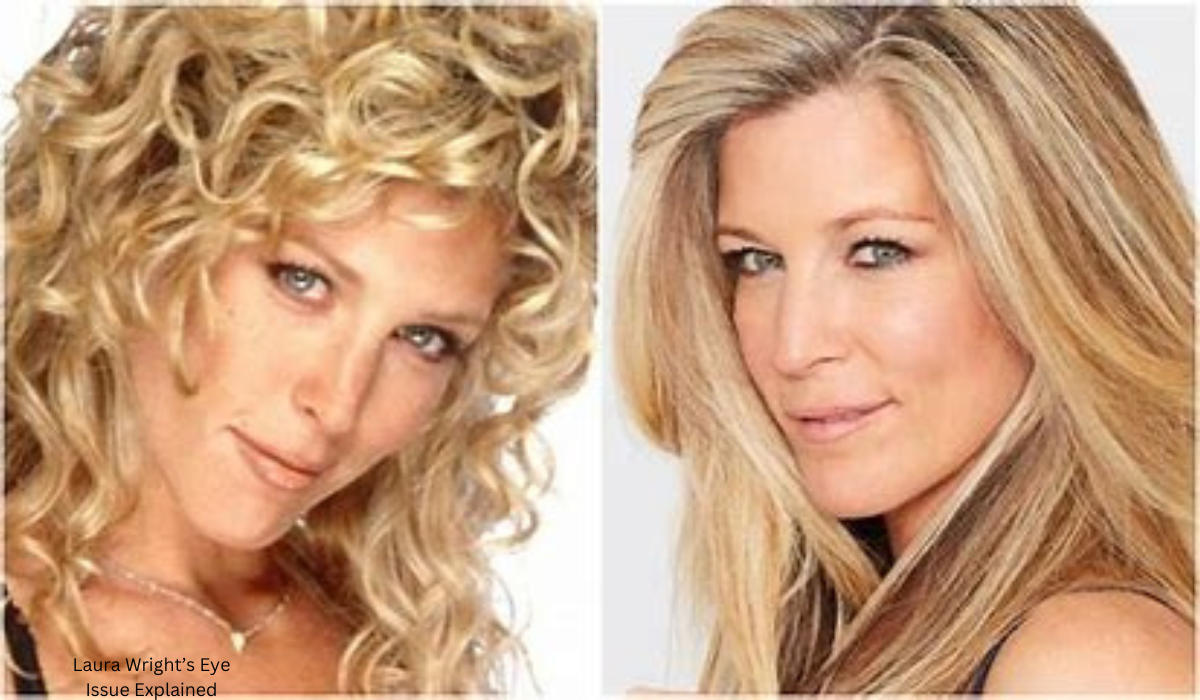In Hollywood, where perfection is often the standard, it’s rare to see public figures openly acknowledge health concerns. But Laura Wright, the cherished actress known for playing Carly Spencer on General Hospital, proved that authenticity is just as powerful as any scripted drama. In September 2024, Laura faced an unexpected health scare, a subconjunctival hemorrhage, commonly known as a broken blood vessel in the eye. Though the condition is harmless, its striking appearance left fans curious and concerned.
What Happened to Laura Wright’s Eye?
One day, Laura woke up to find a startling red patch in the white of her eye. Aware that fans would notice, she took to social media to explain what had happened. She reassured everyone that the condition was harmless and shared that, although it looked dramatic, she felt fine.
“I woke up with a broken blood vessel in my eye; it was CRAZY looking from the wrong angle,” she shared candidly.
Fans appreciated her openness, and the General Hospital team worked behind the scenes to help minimize its appearance during filming. Rather than ignoring or hiding the issue, Laura addressed it head-on, proving once again why she remains one of the most respected and beloved figures in daytime television.
Understanding Subconjunctival Hemorrhage
A subconjunctival hemorrhage occurs when a tiny blood vessel bursts under the conjunctiva—the clear tissue covering the white of the eye. The blood gets trapped, leading to a bright red splotch.
What Causes It?
While it might seem alarming, a broken blood vessel in the eye can happen due to everyday activities such as:
- Sneezing or coughing too hard
- Rubbing the eyes aggressively
- Lifting heavy objects
- High blood pressure
- Minor eye trauma
In Laura’s case, the exact cause remains unknown, but it’s a reminder that these things can happen to anyone, even celebrities.
Treatment and Recovery
The best part? No medical treatment is usually necessary. A subconjunctival hemorrhage heals naturally within one to two weeks as the body reabsorbs the blood. However, a few steps can help the process:
- Use Artificial Tears: If the eye feels irritated, lubricating drops can help.
- Avoid Rubbing the Eyes: This prevents further irritation or worsening of the condition.
- Monitor Blood Pressure: Frequent occurrences could signal underlying issues.
- Be Patient: The redness fades gradually, just like a bruise on the skin.
If someone experiences pain, vision changes, or recurring hemorrhages, consulting an eye doctor is essential.
A Reminder of Self-Acceptance
Laura Wright’s handling of her eye issue was a lesson in self-acceptance and transparency. In an industry where perfection is often prioritized, she showed that embracing reality even when it’s not picture-perfect is just as powerful. Her openness also sparks an important conversation about normalizing natural health changes.
Life brings unexpected moments; whether it’s a sudden eye condition or a change in appearance like trying a new haircut. Just as many women over 60 find empowerment in short, stylish haircuts that celebrate their evolving beauty, embracing imperfections reminds us that confidence comes from within.
Laura’s experience is proof that strength isn’t in hiding what makes us human—it’s in owning it with grace.
FAQs about Laura Wright’s Eye Issue Explained
1. Did Laura Wright’s eye condition affect her work at General Hospital?
- While the broken blood vessel was visible on-screen, Laura continued filming as usual. The General Hospital team worked with her to minimize its appearance through strategic camera angles and makeup.
2. Can stress cause a subconjunctival hemorrhage?
- Stress itself doesn’t directly cause a broken blood vessel in the eye, but stress-related actions like increased blood pressure, excessive eye rubbing, or tension-related sneezing/coughing can contribute to it.
3. How long did Laura Wright’s eye take to heal completely?
- Although she didn’t specify an exact timeline, a subconjunctival hemorrhage typically resolves in 7 to 14 days as the blood is naturally reabsorbed by the body.
4. Was Laura Wright wearing colored contacts or makeup to hide the redness?
- Laura mentioned that she tried to conceal it as much as possible, likely with makeup and camera tricks, but she didn’t wear colored contacts or heavy digital edits to cover it completely.
5. Has Laura Wright experienced this condition before?
- There’s no public record of her experiencing a subconjunctival hemorrhage in the past. However, since it’s a common condition, it can happen to anyone at any time.
